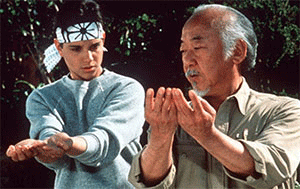 If you want to incorporate a mentoring strategy or program in your own or a client's organisation, department, or team, these tips will help ensure its success:
If you want to incorporate a mentoring strategy or program in your own or a client's organisation, department, or team, these tips will help ensure its success:
Mentoring is a development opportunity for both parties. Eager learners and seasoned veterans who are willing to mentor them can easily connect and begin a consensual, mutually beneficial mentoring relationship. However, the mentoring can also flow in the other direction, since there are many things a seasoned employee can learn from a green one. Regardless of who is the mentor and who is the protégé, both develop important competencies during the relationships, such as organisational information, networking, and political savvy for the protégé, and listening skills, flexibility, and leadership skills for the mentor.
In a mentoring relationship, the protégé (apprentice) is the driver. Because protégés are the primary beneficiaries of the relationship, the onus is on them to schedule meetings, send agendas, report and follow up on progress and action items, and initiate communication with their mentors. And since mentors are traditionally those with higher levels of responsibility, this prevents the mentoring relationship from adding undue burden on them and perhaps even teaches them delegation skills.
Preparation optimizes results. Prior to each mentoring session, protégés should prepare and send an update to their mentors in order to help focus the session for optimal results. They should include things, such as what they've accomplished since their last session, what action items were not accomplished and what got in the way, the challenges and opportunities they're currently facing, and the support they want from the mentor during the upcoming meeting.
Mentoring should be voluntary, not mandatory. Make every effort to allow the protégé to select the mentor. Both the mentor and the protégé must opt in and mutually commit to the mentoring process. Compelling either party to the relationship can lead to poor adherence, "deadbeat" participation, and ineffective results.
Train both mentors and protégés on how to make the most of the program. Ideally, train mentors and protégés separately so they can feel encouraged and free to ask questions, express concerns, and share ideas with peers.
Create an exit strategy up front. Encourage the mentoring partners to have a predetermined exit plan should either one feel at any point that the relationship is no longer beneficial or effective for any reason.
Ensure confidentiality. Mentors and protégés should agree to hold the content of their developmental work together in confidence.
Strong senior leadership support can encourage participation and help reinforce the program's importance. Leadership support can help prevent problems caused by mixed messages that employees receive from unsupportive managers about where they should put their priorities (usually not on mentoring).
Reference: Employee Development on a Shoestring, By Halelly Azulay, ATD Press 2012




